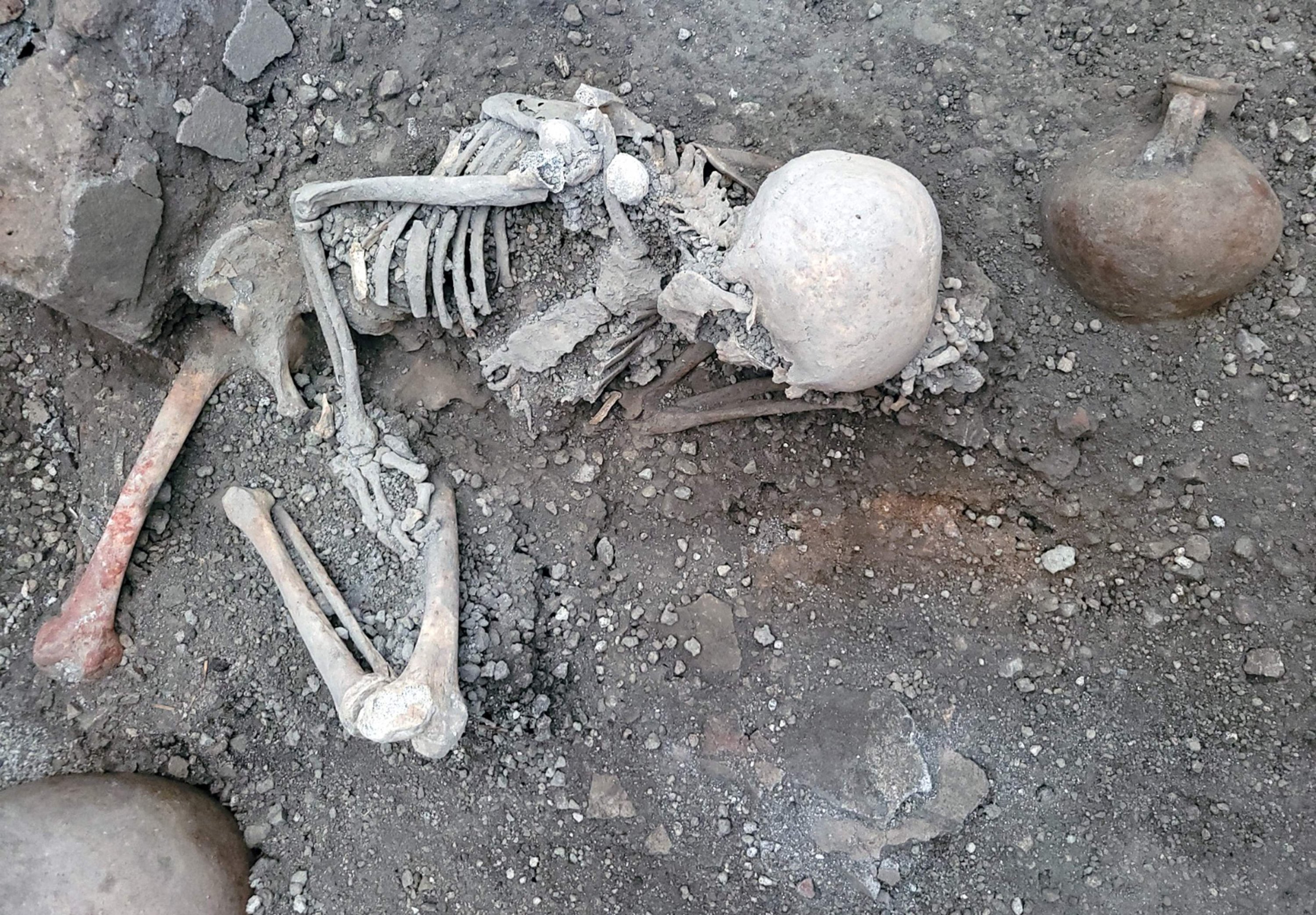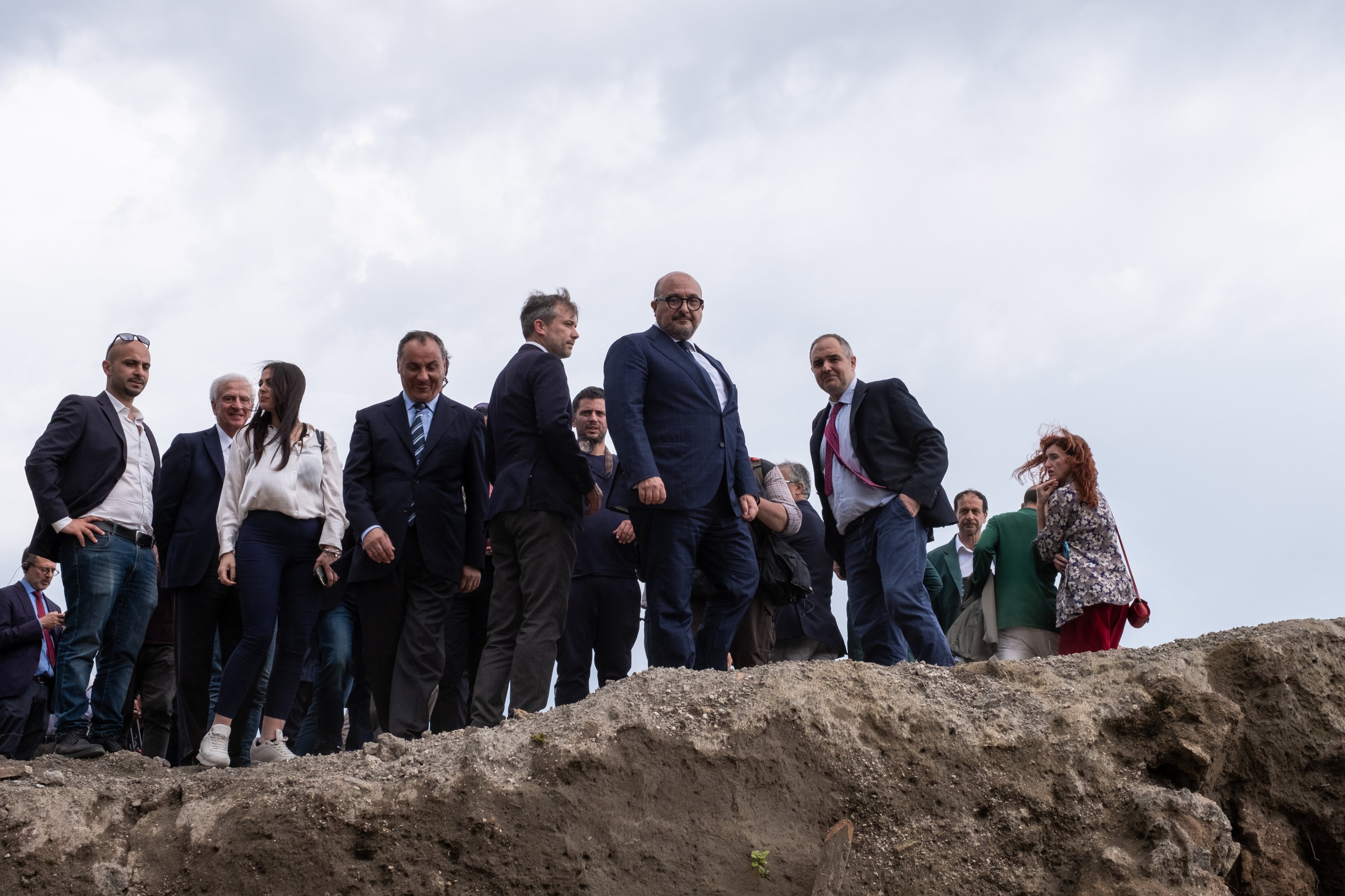© Turkuvaz Haberleşme ve Yayıncılık 2024
The recent discovery of two skeletons at the Pompeii archaeological site provides further evidence of the destructive impact of the volcanic eruption of Mount Vesuvius in A.D. 79. Yet, these skeletons were found beneath a collapsed wall, indicating that the victims likely died as a result of powerful earthquakes that occurred alongside the volcanic eruption.
The pair, believed to be two males aged at least 55, were found in recent excavations at Pompeii's "Chaste Lovers" block of buildings.
They are believed to have been killed as an earthquake knocked down a wall in the room where they sought shelter. One of the skeletons had an arm raised as if in defense.
The earthquake struck as the massive blast from nearby Mount Vesuvius covered the city of Pompeii with thick volcanic ash, preserving the bodies of many of its residents.
To date, the remains of over 1,000 people have been uncovered throughout the sprawling site, most recently in November 2020 when archaeologists unearthed two bodies, believed to be a young enslaved person and his owner.
The two newly discovered victims announced Tuesday "probably died due to multiple traumas caused by the collapse of part of the building," the Pompeii archaeological park said in a statement.
They were found in what is believed to be a storeroom inside the "Chaste Lovers" block, where colorful frescoes and the skeletons of mules who worked the millstones for grain have been uncovered in the past.
The skeletons were found lying on their side with their legs curled up, and one wore a ring on his left hand.
Archaeologists estimate that 15% to 20% of Pompeii's population died in the eruption, mostly from thermal shock as a giant cloud of gases and ash covered the city.

Earthquakes before and during the eruption, as documented in letters by Roman author Pliny the Younger, also took their toll.
"Among the causes of death, the collapse of buildings, in some cases due to earthquakes that accompanied the eruption, proved to be a lethal threat," the park said.
Pompeii's director, Gabriel Zuchtriegel, said modern technology was helping archaeologists "better understand the hell that completely destroyed the city of Pompeii in two days, killing many inhabitants: children, women and men."
Traces of what is believed to be a cloth bundle were found next to one of the victims, containing necklace beads and coins.
Inside the room were an amphora and a collection of bowls and jugs, while an adjacent room contained a home shrine as a fresco and a narrow bathroom with a toilet.
In the room where the men were found, the park said that part of a wall had collapsed, hitting one of the victims "whose raised arm perhaps refers to the tragic image of a vain attempt to protect himself from falling masonry."

Pompeii is an ancient Roman city located near Naples in Italy. It was a thriving and prosperous city until its catastrophic destruction because of the eruption of Mount Vesuvius. The eruption resulted in the burial of the entire city under layers of volcanic ash and pumice, preserving it remarkably well and providing unique insights into ancient Roman life.
The eruption of Mount Vesuvius in A.D. 79 came as a devastating surprise to the residents of Pompeii. The volcano spewed a massive column of ash, gas, and rock into the sky, followed by pyroclastic flows – fast-moving clouds of hot gas, ash, and debris – that engulfed the city. The suddenness and intensity of the eruption meant that many people were caught off guard and had little chance to escape.
For centuries, Pompeii remained buried and forgotten, until its rediscovery in the 18th century. Excavations at the site began in 1748, revealing a remarkably well-preserved snapshot of life in ancient Rome. The layers of ash and debris acted as a natural time capsule, sealing off the city and its buildings, artifacts and even human remains, freezing them in time.
Archaeological investigations have uncovered an incredible wealth of information about Pompeii. The ruins of the city include well-preserved houses, temples, theaters, bathhouses and markets. The colorful frescoes, mosaics and graffiti found on the walls provide insights into the daily life, beliefs and social structures of the people who lived there.
Today, Pompeii stands as one of the most important archaeological sites in the world and is a UNESCO World Heritage Site. It attracts millions of visitors each year who come to witness the remarkable preservation of this ancient Roman city.
